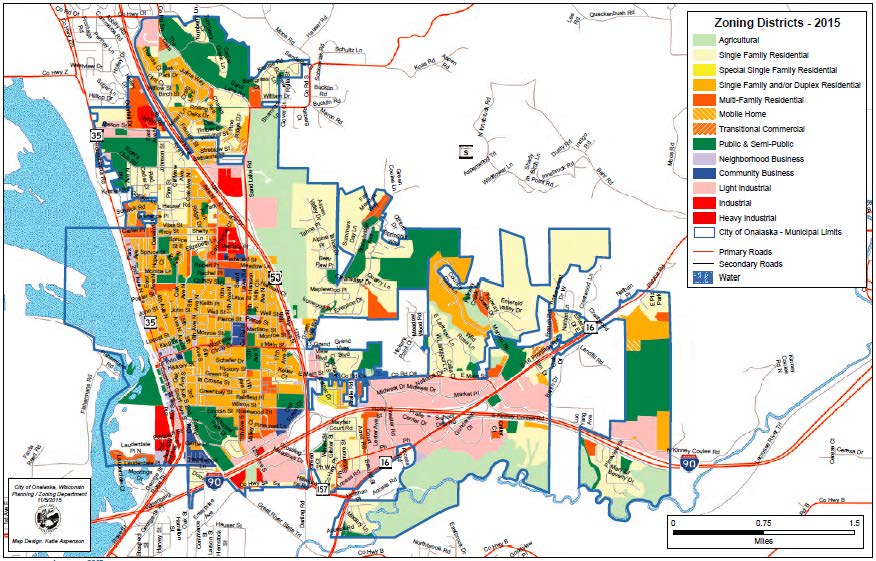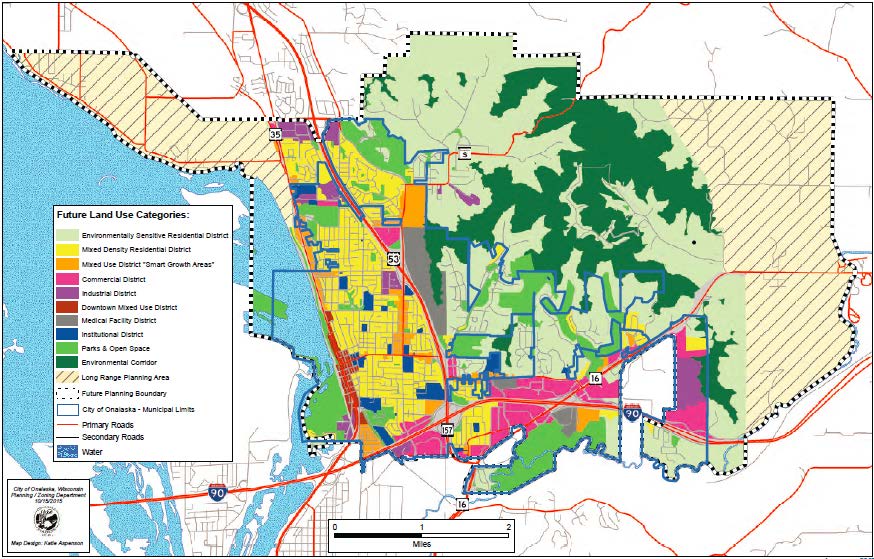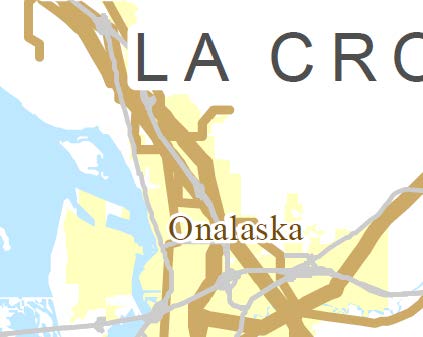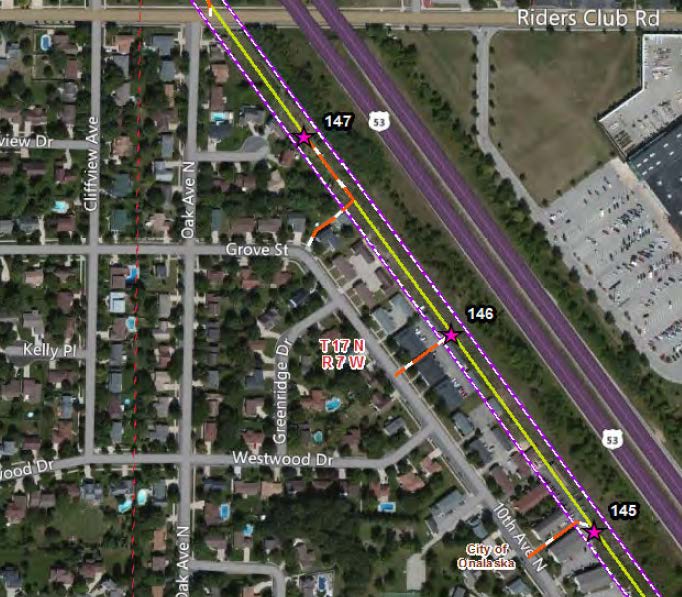RUS Scoping Meetings for Cardinal-Hickory Creek xmsn
December 6th, 2016
Slow evening at Rural Utilities Service’s scoping meeting for the Environmental Impact Statement for the Cardinal – Hickory Creek transmission project. RUS is involved because Dairyland Power Cooperative (DPC) plans to hold a 9% undivided interest in the project, and are looking to RUS to provide the funding. RUS held two more meetings, following on prior meetings October 31 and November 1 & 2, because their notice for those meetings went out a day late, so another Notice went out:
Notice of Intent To Hold Public Meetings and Prepare Environmental Impact Statement (October 18, 2016
Where’s my prior post on these meetings? It’s gone! Here’s the dates and locations (click for larger version) — the last one is tomorrow in Barneveld, Wisconsin:
So to make quick work of it, this is cut and pasted from the RUS Cardinal Hickory Creek page:
Alternatives Evaluation Study (July 2016)
Notice of Intent To Hold Public Meetings and Prepare Environmental Impact Statement (October 18, 2016)
Macro-Corridor Study (September 2016)
Alternative Crossings Analysis (April 2016)
- ACA Table of Contents
- ACA Main Report Chapters 1-5
- ACA Main Report-Chapter 6-References
- ACA Appendices
SCOPING MEETINGS
I had a quick chat with Dennis Rankin who’s in charge of the environmental review on this and the Dairyland Q-1 South projects, and had a few quick things to register, particularly that ATC has announced that the project is delayed:
ATC postpones Cardinal-Hickory Creek project – The Dodgeville Chronicle -Dodgeville, WI
I had this article and a few comments to add tonight, and will file more detailed comments before the deadline — now January 6, 2017.
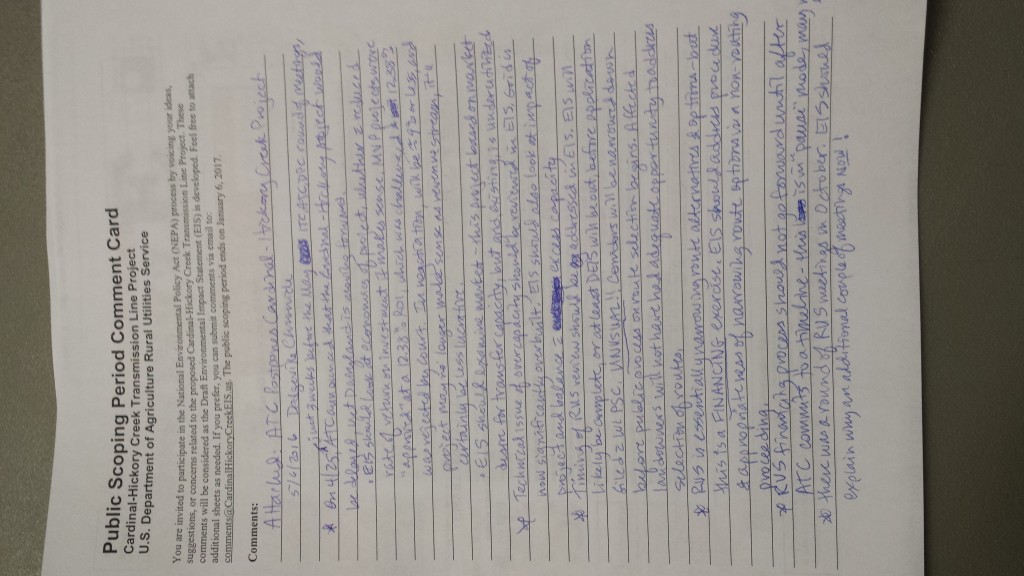 (don’t worry, I’ll get this looking pretty by the deadline!)
(don’t worry, I’ll get this looking pretty by the deadline!)
On the way in, there was new transmission marching across the countryside, so ugly:
And look how close to this house in New Vienna, right up near the garage, and not far from the house either — this line cut right through the middle of town:
But all in all, it was a beautiful day for a drive today!
ATC/ITC/Dairyland’s Cardinal-Hickory Creek Transmission
May 17th, 2016
Be there or be square — transmission open houses in eastern Iowa near Dubuque and southwestern Wisconsin near Cassville.
Monday, May 16 –
Peosta Community Center
7896 Burds Road
Peosta, IA 52068Tuesday, May 17 –
Pioneer Lanes
1185 US (Business) 151
Platteville, WI 53818Wednesday, May 18 –
Deer Valley Lodge
401 West Industrial Drive
Barneveld, WI 53507Thursday, May 19 –
Deer Valley Lodge
401 West Industrial Drive
Barneveld, WI 53507
Where’s Art Hughes when you need him??
Art Hughes has died… March 31st, 2009
Days before he died, Art Hughes was testifying in Peosta against an ITC transmission line heading east to Peosta, here’s the photo from that hearing, and the article about it is in the “Art Hughes has died…” link above.
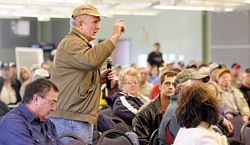 And now they’re doing another round of open houses, yesterday in Peosta, IA. Wherefore Art thou? Well, Art, where are you? I guess they remember him, because this time it’s “open house” and not a meeting/hearing. These “open houses” are held by ATC, ITC, and Dairyland about its plan for the Cardinal-Hickory Creek Transmission Project. This project is the southern part of the “5” project on the MISO MVP project map below, from the Hickory Creek substation (near Dubuque) to the Cardinal substation (near Madison)(the northern part of 5 is the Xcel/ATC Badger Coulee line). It’s one of the transmission lines that fills in the 345 kV transmission gaps to enable North & South Dakota to Chicago bulk power transfer.
And now they’re doing another round of open houses, yesterday in Peosta, IA. Wherefore Art thou? Well, Art, where are you? I guess they remember him, because this time it’s “open house” and not a meeting/hearing. These “open houses” are held by ATC, ITC, and Dairyland about its plan for the Cardinal-Hickory Creek Transmission Project. This project is the southern part of the “5” project on the MISO MVP project map below, from the Hickory Creek substation (near Dubuque) to the Cardinal substation (near Madison)(the northern part of 5 is the Xcel/ATC Badger Coulee line). It’s one of the transmission lines that fills in the 345 kV transmission gaps to enable North & South Dakota to Chicago bulk power transfer.
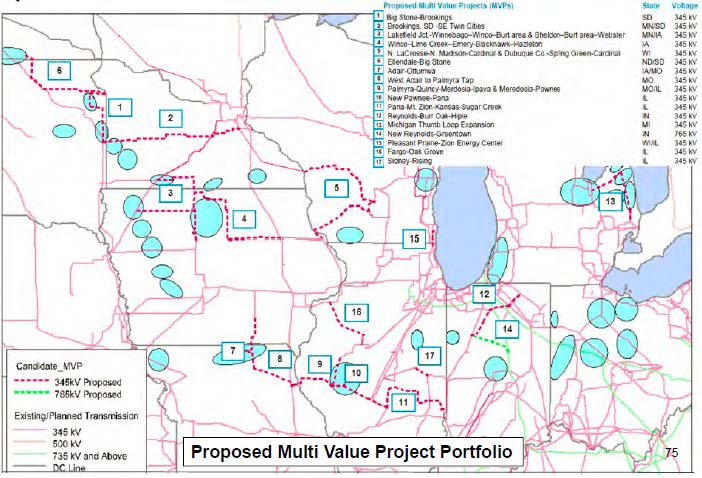 Once more with feeling: Open House Schedule — each starts at 4 p.m. and goes until 7 p.m. (hello, ITC, it’s planting season, how convenient!):
Once more with feeling: Open House Schedule — each starts at 4 p.m. and goes until 7 p.m. (hello, ITC, it’s planting season, how convenient!):
Monday, May 16 –
Peosta Community Center
7896 Burds Road
Peosta, IA 52068Tuesday, May 17 –
Pioneer Lanes
1185 US (Business) 151
Platteville, WI 53818Wednesday, May 18 –
Deer Valley Lodge
401 West Industrial Drive
Barneveld, WI 53507Thursday, May 19 –
Deer Valley Lodge
401 West Industrial Drive
Barneveld, WI 53507
Tuesday night in Onalaska
December 17th, 2015
Tuesday night, the Onalaska Plan Commission took up the revised Comprehensive Plan.
Here’s where you can check out the new Comprehensive Plan (search for “transmission” and you’ll find not much):
The current Zoning map (click for larger version):
Do you see any transmission lines on that map? Any pipelines on that map? The City doesn’t have a map of transmission lines, or pipelines, yet it’s a prominent feature of Onalaska, just drive up Hwy 35 or Hwy 53 and you’ll see what I mean. The City Land Use & Development Director said in the meeting that they don’t have one, it would be very difficult to put together and that this info can be regarded as “proprietary.” Not quite, it could be “CEII” information, but when you see it driving down the road, when you look at google and there it is, there’s no reason the City can’t draw a line on the map!
There’s a lot of transmission through Onalaska, lining both sides of the highways, in the middle of the city bottlenecked in-between the river and the bluffs (like Red Wing), and it runs right through the heart of the city. Here’s ATC’s “map” of transmission:
Here’s WI-PSC’s map:
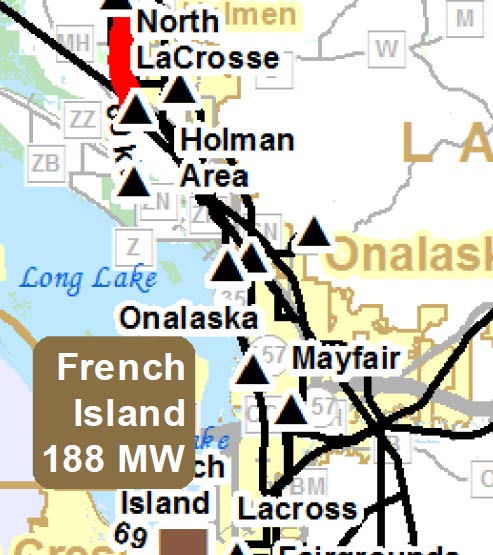 As you can see, it’s not rocket science to put a map together of transmission through Onalaska and its potential expansion areas.
As you can see, it’s not rocket science to put a map together of transmission through Onalaska and its potential expansion areas.
Dairyland is wanting to tear down its old line on the west side of Highways 53 and 35 and virtually double the height of the towers and the capacity. That’s not updating or maintenance, that’s “tear down the old line and build a new one” construction.
NOW is the time, because there’s not yet a Dairyland application, and because Xcel’s line on the east side of Highways 35 and 53 is also old, they’re going to want to “upgrade” soon too. The routing of transmission through Onalaska in light of Wisconsin’s adoption of its Electrical Code which prohibits construction under a line, means that new construction should be carefully reviewed. And right now, rebuilding, tearing down and new construction of something much bigger, shouldn’t be allowed over and next to homes and businesses. What to do? It’s a narrow area with a lot of transmission! But this is what “planning” is all about. Looking into the future and figuring out what they want the City to look like, how they can address the extreme impacts of transmission, and if they can minimize or mitigate these impacts. Here’s an example of it running through people’s back yards, stars indicate pole placement in people’s back yards, and the white/red lines are access roads through people’s back yards!
On behalf of No CapX 2020, I sent the Planning Commission and City Council these comments:
At Tuesday’s meeting, there were few commenters, and they quickly wrestled with the issues raised, and sent it back to the Committee for consideration of transmission issues and impacts.
THANK YOU, ONALASKA PLAN COMMISSION!
Transmission in NYT today
February 7th, 2009
Matthew Wald has a good piece in the NYT today, good in that it raises some of the issues, but these issues raised need some more digging, can you dig it?
Check this paragraph from the article:
In fact, energy experts say that simply building a better grid is not enough, because that would make the cheap electricity that comes from burning coal available in more parts of the country. That could squeeze out generators that are more expensive but cleaner, like those running on natural gas. The solution is to put a price on emissions from dirtier fuels and incorporate that into the price of electricity, or find some other way to limit power generation from coal, these experts say.
Not “could,” but WOULD “squeeze out generators that are more expensive but cleaner” and adding externalities to coal generation cost would only stop that, would only be a “solution” if it tacked on HUGE costs, far greater than those anticipated by those advocating either Cap & Trade or Tax.
But those of us in transmission are glad to see the driver for new construction exposed, as it was in the MISO Benefits Study by our good friends at ICF:
RTO operational benefits are largely associated with the improved ability to displace generation with coal generation, more efficient use of coal generation, and better use of import potential.
Here’s that MISO study, the above quote comes from the conclusions, p. 83, and is also stated in the intro — THIS IS THE REASON FOR TRANSMISSION, THIS IS THE REASON FOR THE MIDWEST MISO MARKET. Read the study:
ICF’s Independent Assessment of Midwest ISO Operational Benefits
For example, Jose Delgado whining about hwo long it took to get the permit for Arrowhead, what does he expect for a project that was an absurdly obvious ploy for a superhighway for bulk power portrayed as a “local load” need for WUMS? They put together many options in the WRAO report, and selected one, Arrowhead, “3j,” as the be-all and end-all of transmission. That was declared the ONE line that would fix Wisconsin. Then, next thing you know, they still want to do “5” more commonly known as the Chisago project, they want to do “9” in SW Minnesota claiming “it’s for wind” when there’s only 213-302MVA coming off of Buffalo Ridge into the Nobles substation, they do them all because that’s what they want, they can ship bulk power. It’s been so dishonest… Utilities have been so dishonest…
And let’s look at the financing of these lines. CapX 2020 testimony and a powerpoint demonstrate that they don’t have the financing lined up for that $2 billion dollar project. They were working through Lehman Bros. so what does that say? The “Cap” of CapX 2020 is “Capital” and they don’t have it. But because they want it, they’ll make us pay for it. Is something wrong with this picture?
———————————————–
Hurdles (Not Financial Ones) Await Electric Grid Update
“We burn up three years on a line that will take two months to build,” he said.


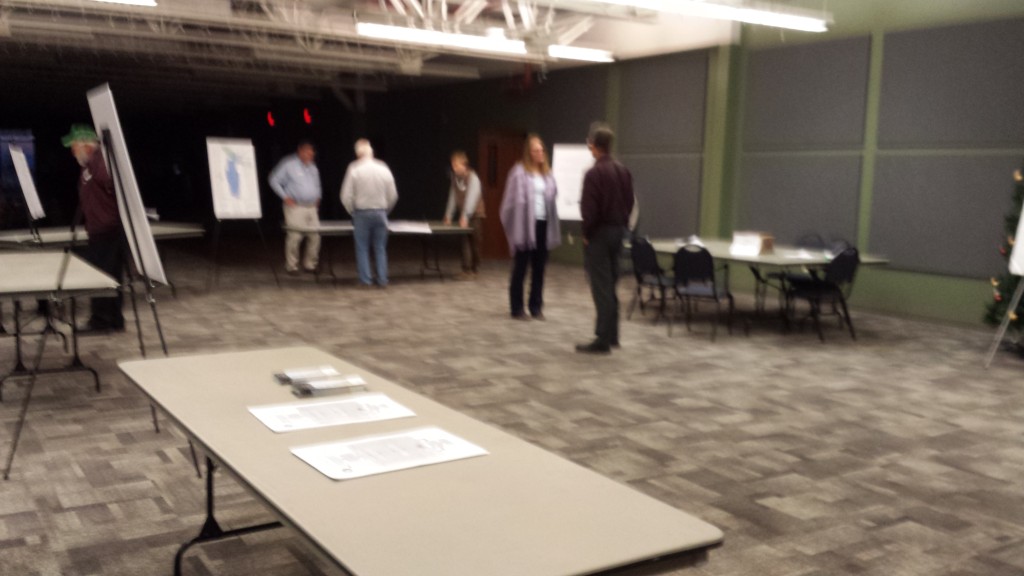
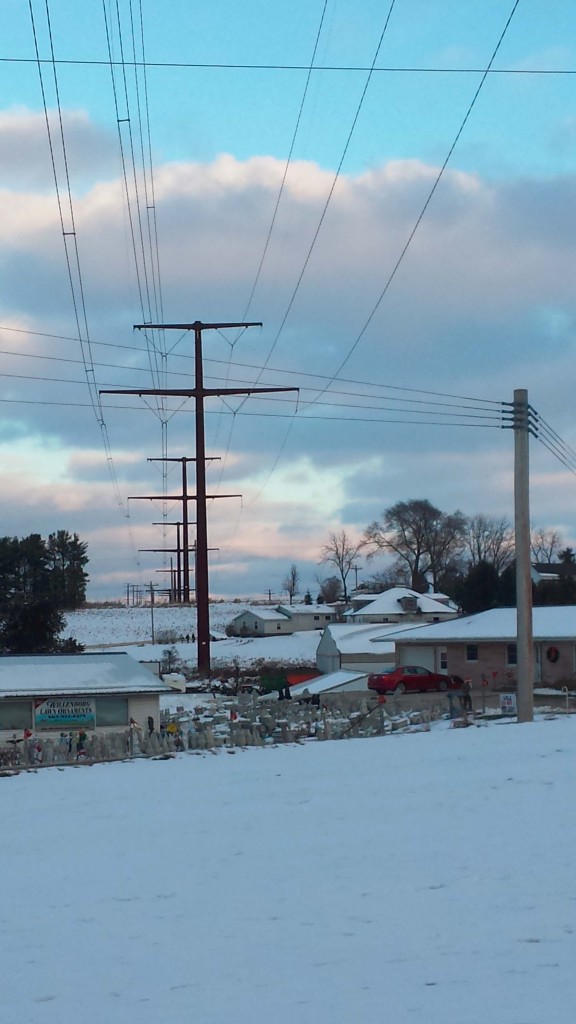
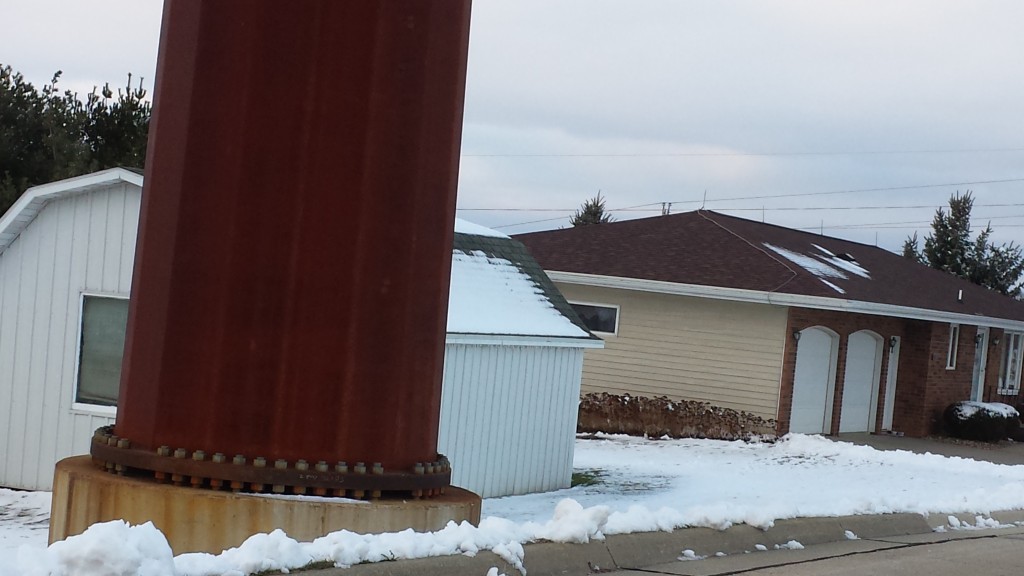
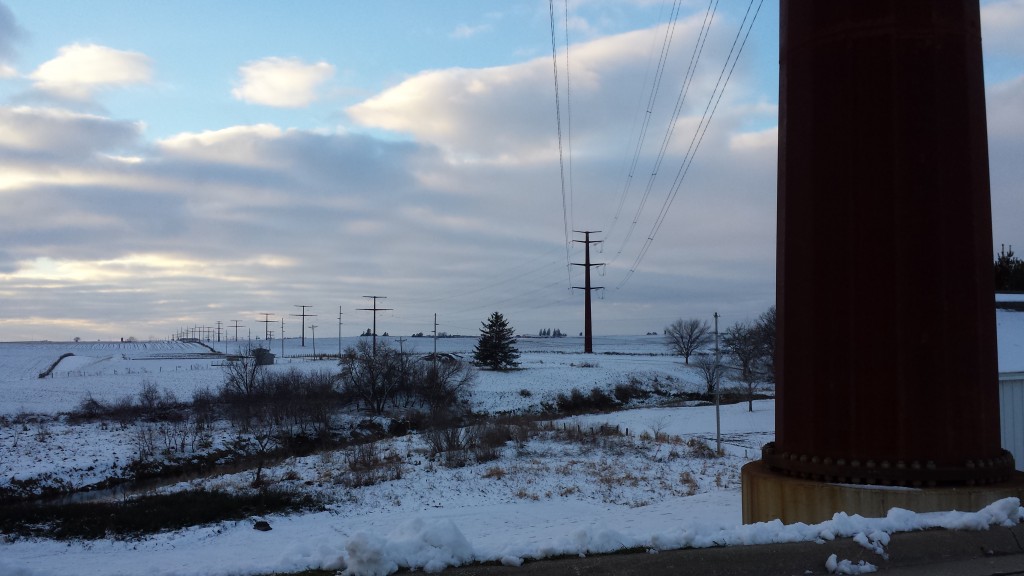
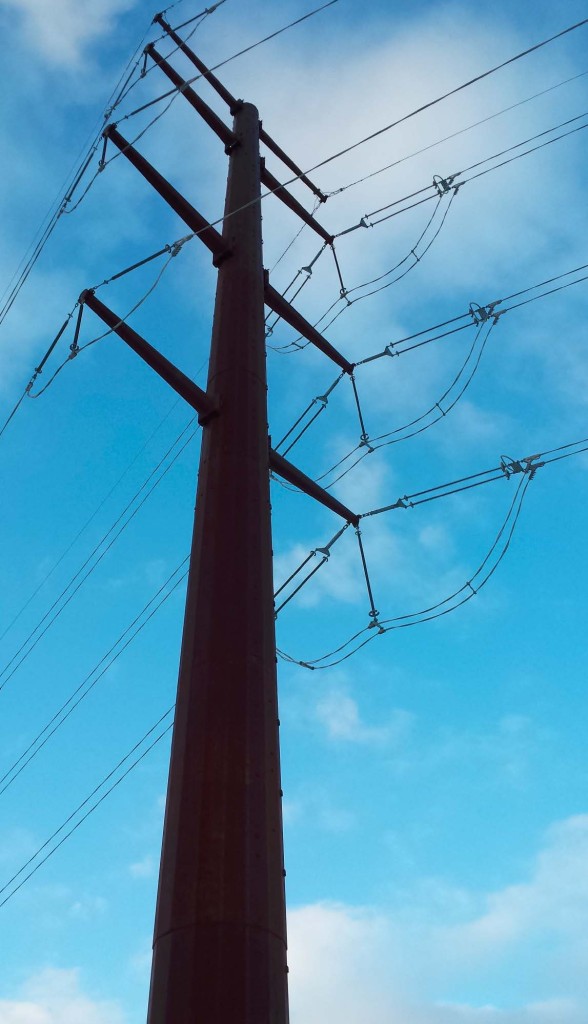
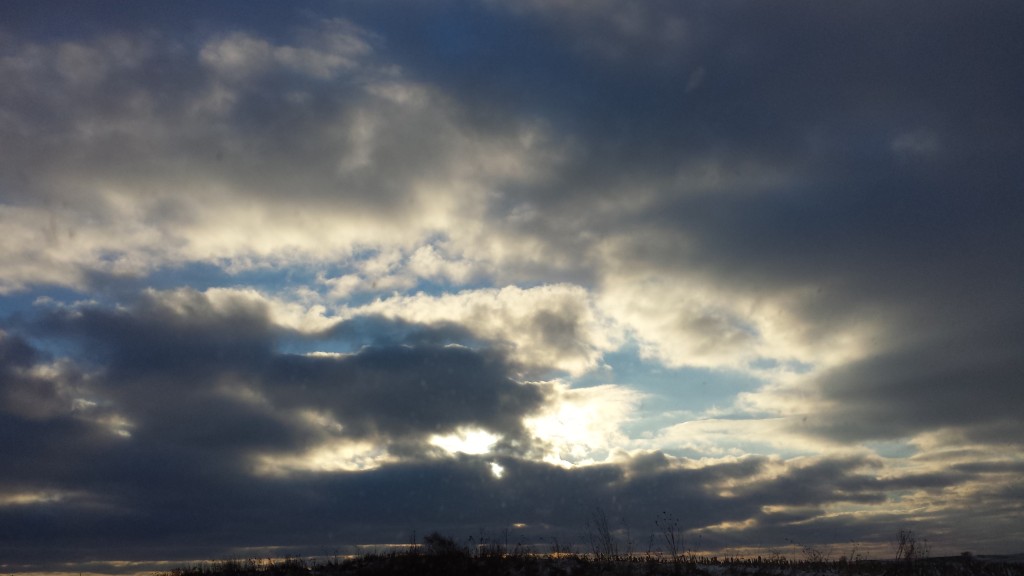
![20151215_185850[1]](https://legalectric.org/f/2015/12/20151215_1858501-1024x576.jpg)
